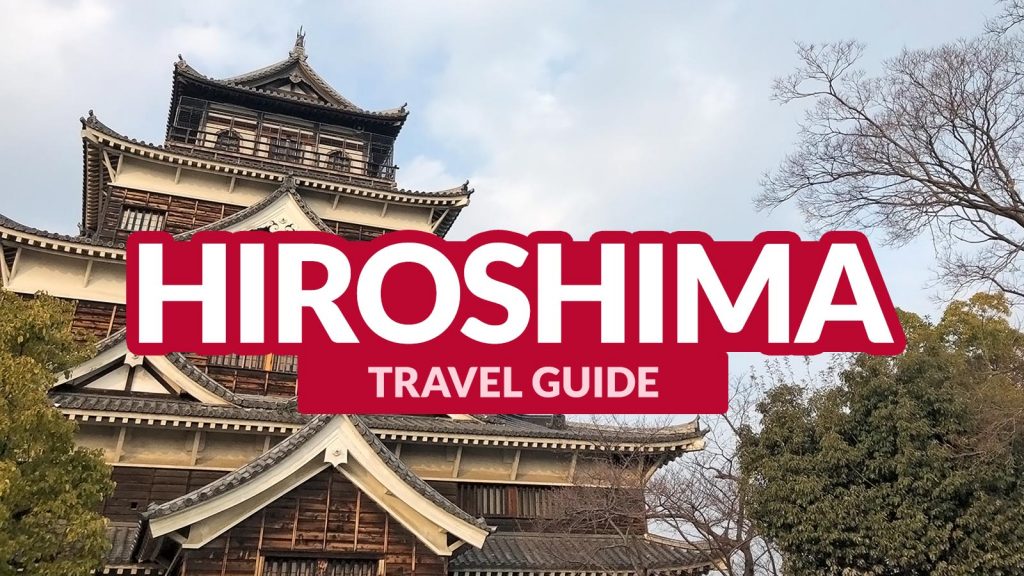Hiroshima might be known to many as one of the cities in Japan that suffered the devastation caused by the atomic bomb explosion. But amid the rubbles of destroyed structures and lost lives, the undeterred spirit of the people to rebuild everything prevailed, just like a phoenix rising from the ashes of its past.
The city of Hiroshima became an important urban center, especially during the time when Japan is shifting from a rural economy to an industrial one. The Ujina Harbor played a big role in shipping products (and military supplies during the war), making it a key port city. Consequently, it became the target of the atomic bombing near the end of World War II. The city was immensely devastated, taking more than a hundred thousand lives and destroying almost everything.
Today, the city had undergone a lot of changes and developments, but it is still tamer than other popular cities and tourist destinations in Japan like Tokyo and Osaka. It is the capital of Hiroshima Prefecture in the Chugoku region. The city and other nearby cities and towns are served by Hiroshima Airport, Hiroshima Station (JR West, Astram Line, and Skyrail Midorizaka Line), and a network of national highway roads. Navigating around the city is done by taking the local bus, boarding the tram (streetcars) or riding the bicycle.
Foodies will also discover Hiroshima’s famous okonomiyaki, oyster, and the soupless ramen — shirunashi tantanmen. You will never have a problem finding these specialties as restaurants and other food places serving them abound in the city and other places in the prefecture.
Getting to nearby attractions from the city center is not a problem as most of them are linked to the city by tram and by train, taking only an hour or so to reach them. Some of the well-known attractions are Miyajima, Rabbit Island, Onomichi, and Sandankyo Gorge.
Hiroshima Travel
Hiroshima has two registered UNESCO World Heritage Sites — The A-Bomb Dome (Genbaku Dome) and the Itsukushima Shrine on Itsukushima Island, which is popularly known as Miyajima Island. The A-Bomb Dome is located in the Hiroshima Peace Memorial Park in the city center, the atomic bombing’s ground zero site and its surrounding area. The Memorial Park houses monuments and memorials including the Hiroshima Peace Memorial Museum, Children’s Peace Monument, Memorial Cenotaph, and Peace Flame, among others.
Miyajima is famous for its orange giant torii gate, welcoming visitors even from afar. The torii gate is part of Itsukushima Shrine, which faces the Onoseto Strait. It’s also called the “floating” torii gate because it seems to be like that during high tide when part of it is submerged in the water. Other attractions on the island are the street market, the Toyokuni Shrine (five-story pagoda), Awashima Shrine, and the Kiyomori Shrine, just to name a few.
Okunoshima in Takehara City is another day trip attraction from Hiroshima city. It is also called the Rabbit Island because the island is inhabited by a number of rabbits. Aside from these cute residents, the island is also the site of what used to be a Poison Gas powerplant, now sitting in ruins. You can also visit the Poison Gas Museum.
Here’s another destination for those who love furry animal — Onomichi, which is perfect for cat lovers! Take the Cat Trail/Alley after visiting the temples and museums. For those who are looking for adventure, trek along the Sandankyo Gorge. And if you are into sake, you shouldn’t miss the Sake Festival in Saijo, just 40 minutes from Hiroshima by train. The festival happens around October every year.
You can choose to stay within the city, near Hiroshima Station, or in one of the hotels on Itsukushima Island. Depending on your pace, four to five days are enough to cover the city and other day trip destinations from Hiroshima.
Additional information about Hiroshima:
- Language: Japanese (Nihongo). The majority of the locals seldom speak English, but most of the signs and other tourist promotional materials have English translations.
- Currency: Japanese Yen (JPY, ¥). JPY 1000 is around USD 9, EUR 7.7, SGD 12.14, PHP 460 (as of November 2018).
- Modes of Payment: Most establishments prefer cash payment, but many of them also accept credit card transactions.
- Electricity Info: 100V, 50/60 Hz. Type A sockets. Plugs have two flat pins. Type B is sometimes used but not that common.
Plan Your Hiroshima Trip
Best Time to Visit |
Top Hotels and Hostels |
Top Things to Do |
Getting There |
How to Get Around |
Travel Passes |
Sample Itineraries |
Hiroshima Travel Essentials
Pocket Wi-fi Stay Internet-connected while in Hiroshima! ➡️ RESERVE HERE |
5-Day Pass (KIX Pick Up) Explore Kansai and Hiroshima! ➡️ RESERVE HERE |
ICOCA Card Easy access to train, subway and buses! ➡️ RESERVE HERE |
JR Pass Unlimited train rides within the JR network. ➡️ RESERVE HERE |
Top Hiroshima Hotels
Sheraton Grand Hiroshima Hotel ➡️ CHECK RATES & AVAILABILITY |
Candeo Hotels Hiroshima Hatchobori ➡️ CHECK RATES & AVAILABILITY |
Hiroshima Washington Hotel ➡️ CHECK RATES & AVAILABILITY |
Hotel Granvia Hiroshima ➡️ CHECK RATES & AVAILABILITY |
